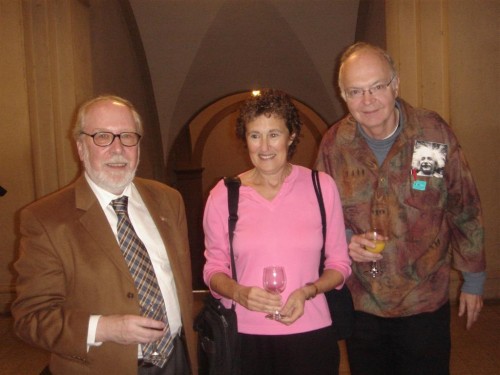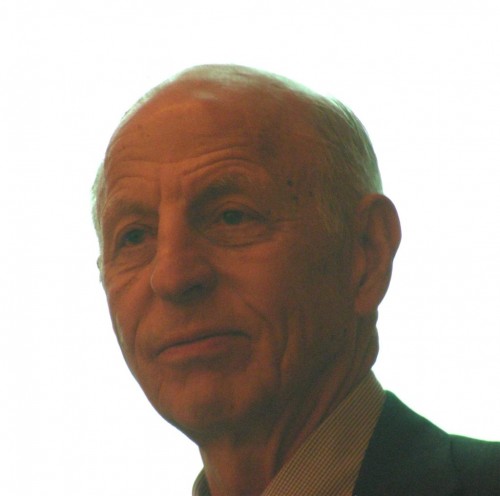Talks in coming months
Here is a list of some presentations I am scheduled to give in the near future. Time for the faithful followers of this blog to start organizing groupie trips and get ready to haggle with the ticket scalpers and queue up at 3 AM for the best seats.
On May 9 I will give a talk in Paris, at Valtech, on the topic “Eiffel: Objects, Languages, Concurrency” [1]. It will be a general overview talk (in French) describing the key concepts of the Eiffel method and new developments.
On May 17 I will give a keynote at the Russian conference on IT education [2]. I haven’t sent a title and abstract yet but will talk about our experience of teaching introductory programming at ETH, now for 9 years, supported by the Touch of Class textbook which is now available in Russian. The talk itself will be in Russian.
On Tuesday, 29 May, I will give a keynote at TOOLS EUROPE in Prague [2]. This is the 50th TOOLS conference, a milestone, and I will talk on the theme of the conference, “The Triumph of Objects”, to assess the impact of object technology on the field of IT.
I am also giving a keynote at MSEPT (Multicore Software Engineering, Performance and Tools) the same week, on May 31. MSEPT [4] is co-located with TOOLS in Prague. The title of my presentation is “Concurrent Programming is Easy” and I will in particular present new developments in the SCOOP model and our first steps in the Concurrency Made Easy ERC Advanced Investigator Project. In addition I will be participating in two Eiffel-related workshops at TOOLS, WAVE on Advances in Verification for Eiffel, May 29 [5], where we are submitting several papers, and the third “Eiffel Web Design Feast” on May 30, part of a community project that is building an Eiffel-based Web development framework [6].
On June 5 I am giving an invited talk at the New Faculty Symposium of ICSE (International Conference on Software Engineering) in Zurich [7]. The title (assigned by the organizers) is “Promoting your ideas”. I did warn the organizers that this would be a contrarian talk as I find the current computer science publication culture in need of a reboot — this is the goal of the November Dagstuhl workshop mentioned below — but they said it was OK; I might even have heard the word “welcome” at some point.
On June 12 I will deliver a keynote at the International Conference on Reliable Software Technologies, also known as Ada-Europe, in Stockholm [8]. The Ada community remains significant and is becoming interested in contracts, hence the subject of my talk: Life with Contracts. I will summarize the experience gained in applying Design by Contract as a core principle throughout development, and the next steps in developing the approach.
On June 24 I am on one of the two panels at the Alan Turing Centenary Conference in Manchester [9]; the panel is entitled The Big Questions in Computation, Intelligence and Life.
In Seattle, 16-20 July, I look forward to presenting our latest verification ideas to the other members of the IFIP Working Group 2.3 on programming methodology [10]; this is the toughest and most unforgiving audience I know, but their feedback has always proved invaluable.
The next set of talks (apart from a possible presentation at the Snowbird conference in July, which I haven’t confirmed yet) is at our LASER summer school in Elba, September 2-8 [11], where I will deliver a set of lectures entitled Eiffel: a study in language design and evolution; it will be an in-depth discussion of issues that arise in devising a quality-focused programming language and managing its continued refinement over a long period, focusing on a few key design principles.
A few weeks later, on September 26, in Natal, I will present a keynote at the Brazilian software engineering conference, SBES [12]. I will talk about concurrency again, hoping of course to have new results to showcase by then.
Another event in which I am involved and expect to give a presentation is a Dagstuhl “Perspectives” workshop on the Publication Culture in Computer Science, November 6-9 [13]. The workshop was set up on the initiative of Moshe Vardi and I am one of the organizers. There is a widespread feeling that the publication model of computer science is broken; a number of articles in this blog have discussed the issues. At Dagstuhl we hope to be able to start fixing the process. Stay tuned.
References
[1] Talk at Valtech, 9 May 2012, information here.
[2] 10th All-Russian conference on IT education, Moscow, 16-18 May 2012, conference page here.
[3] TOOLS Europe 2012, Prague, 28 May – 1 June 2012, conference page here.
[4] MSEPT: International Conference on Multicore Software Engineering, Performance, and Tools, Prague, 31 May – June 1, 2012, conference page here.
[5] Workshop on Advances in Verification for Eiffel (WAVE), Prague, 29 May 2012, workshop page here.
[6] Eiffel Web Design Feast, Prague, 30 May 2012, call for participation available here.
[7] New Faculty Symposium at the International Conference on Software Engineering (ICSE), Zurich, 5 June 2012, symposium page here.
[8] 17th International Conference on Reliable Software Technologies (Ada Europe 2012), Stockholm, 11-15 June 2012, conference page here.
[9] Alan Turing Centenary Conference, Manchester, 11-25 June 2012, conference page here.
[10] IFIP TC2-WG2.3 (Working group on Programming Methodology), group page here (meetings by invitation only).
[11] LASER summer school 2012, Innovative Languages for Software Engineering, 2-8 September 2012 (other speakers are Andrei Alexandrescu on D, Roberto Ierusalimschy on Lua, Ivar Jacobson on UML and SEMAT, Eric Meijer on C# and Linq, Martin Odersky on Scala, Simon Peyton-Jones on Haskell, and Guido van Rossum on Python; school page here.
[12] XXVI Brazilian Symposium on Software Engineering (SBES), part of CBSoft (3rd Brazilian Conference on Software: Theory and Practice), Natal, 23-28 September 2012, symposium page here.
[13] Perspectives Workshop: Publication Culture in Computing Research (by invitation), Dagstuhl, 6-9 November 2012, workshop page here.


 Informatics Europe
Informatics Europe LASER summer school
LASER summer school Propulsion Academy
Propulsion Academy